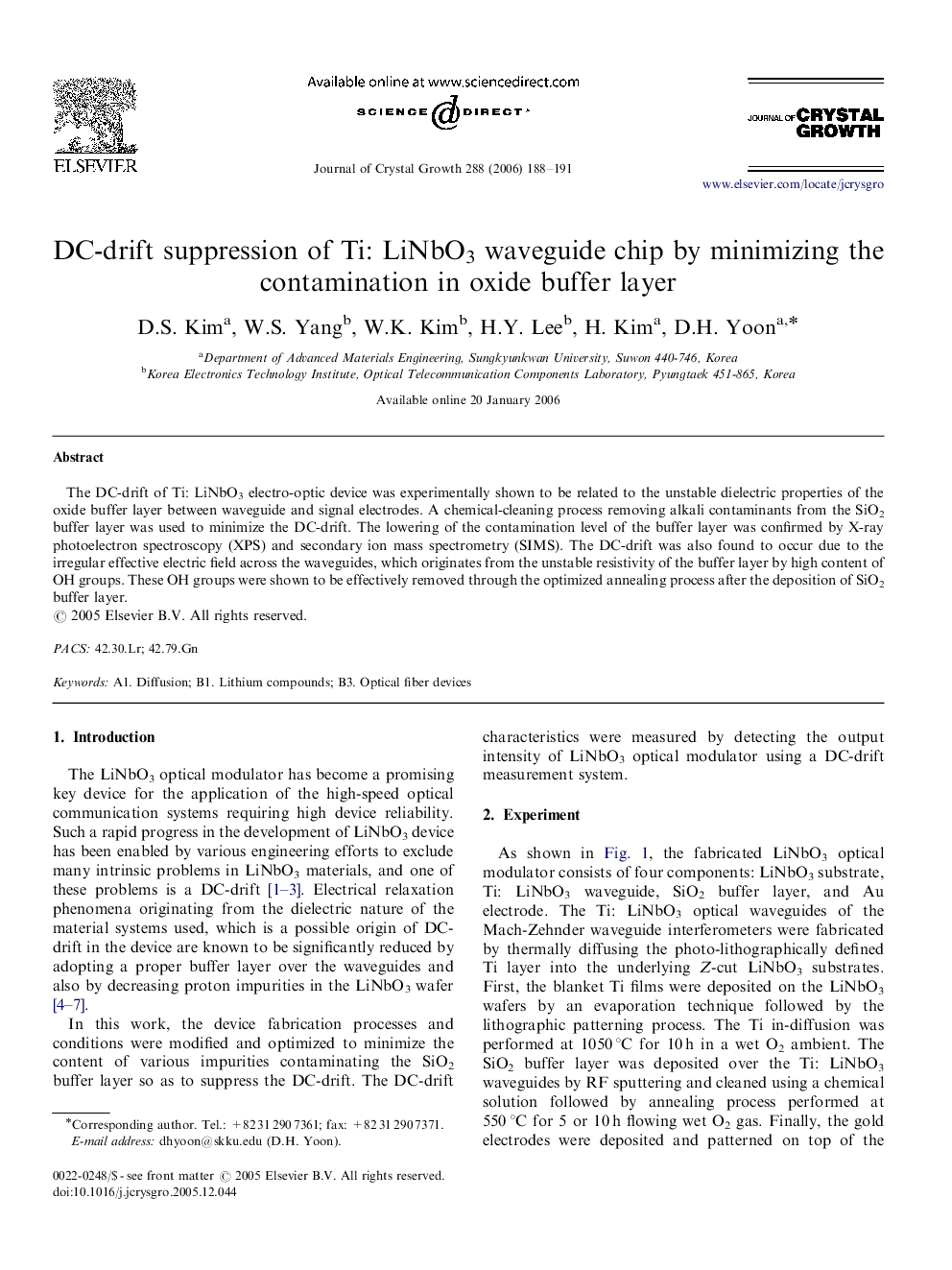| Article ID | Journal | Published Year | Pages | File Type |
|---|---|---|---|---|
| 1796438 | Journal of Crystal Growth | 2006 | 4 Pages |
Abstract
The DC-drift of Ti: LiNbO3 electro-optic device was experimentally shown to be related to the unstable dielectric properties of the oxide buffer layer between waveguide and signal electrodes. A chemical-cleaning process removing alkali contaminants from the SiO2 buffer layer was used to minimize the DC-drift. The lowering of the contamination level of the buffer layer was confirmed by X-ray photoelectron spectroscopy (XPS) and secondary ion mass spectrometry (SIMS). The DC-drift was also found to occur due to the irregular effective electric field across the waveguides, which originates from the unstable resistivity of the buffer layer by high content of OH groups. These OH groups were shown to be effectively removed through the optimized annealing process after the deposition of SiO2 buffer layer.
Related Topics
Physical Sciences and Engineering
Physics and Astronomy
Condensed Matter Physics
Authors
D.S. Kim, W.S. Yang, W.K. Kim, H.Y. Lee, H. Kim, D.H. Yoon,
